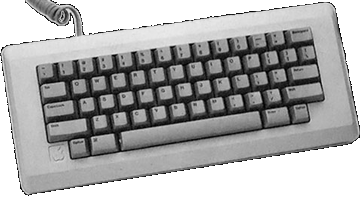GUI Discussion :: Bruce Horn Response
Jef Raskin's perspective on the origin of the Macintosh was very interesting. While Raskin doesn't actually contradict anything in my article apart from the origins of the internationalizable software (Joanna Hoffman in the Mac group), I still feel that there are several corrections that need to be made.
My intention on writing the article was not to give individual credit to people for coming up with particular ideas. Rather, it was to show that the Mac was a different beast than the Xerox systems, a point that I believe I made clearly.
Raskin does have a few errors in his history and incorrectly quotes me as follows:
Horn is correct that click-and-drag methods were invented at Apple and not at PARC (or elsewhere, as far as I know). I created this method for moving objects and making selections after finding the Xerox click-move-click method prone to error. Bill Atkinson extended the paradigm to pull-down menus. This
I did not say that in my article at all. Xerox had click-and-drag in menus and for moving graphical objects long before Apple even existed as a company. In particular, Smalltalk-76 pop-up menus were click and drag. In my article I was talking about dragging files for file manipulation and drag & drop. PARC was a large organization with many groups doing research; it is not surprising that Raskin, as a visitor, did not see everything being done at PARC.
Horn makes it seem that the selection-based editor came with Tesler from PARC. It may have been a case of convergent evolution, since we already had that paradigm at the Mac project. In this case it dates at least back
Again, modeless selection-based graphical editing was in Tesler's Gypsy and Smalltalk-76, and predates Apple as a company. It is quite unlikely that Raskin's system at Bannister & Crun had much in common with the Smalltalk text editor.
When Bruce Horn discusses the hardware, and attributes the overall concept for the design to Jerry Mannock (who indeed did a world-class job on the final design of the box). Horn is unaware that the requirements for a small footprint, unique aesthetic, built-in sound, etc. were all part of the project specs from the very beginning, long before Mannock joined the team.
I didn't attibute the overall concept to Jerry Manock, and I was indeed aware of Raskin's contribution. In my article I wasn't interested in attributing every innovation to an individual person. Jerry Manock and his group created the Mac look which is what I was discussing.
Horn and many other people who joined Apple long after the Mac and Lisa projects were well under way never knew the genesis of many of the ideas the
The Mac and Lisa both changed dramatically during the time I was at Apple. Many, if not most of the innovations that I mentioned were developed during that time.
Raskin also mentioned that the Star was "incredibly slow and somewhat clumsy to use..." I did have an opportunity in 1986 to try a Star and agree with his observations. However, when I said in the article that the Star was advanced I was indeed talking about the underlying system and ideas that went into the Star. The ideas have persisted and the architecture, while not visible to the user, was still quite sophisticated. I believe that to have a sophisticated and usable interface, the system has to be well thought-out also.
In addition to Raskin's list of articles that he has written about user interface, readers might be interested in looking up the Canon Cat, a computer of Raskin's design that was developed around the same time as the Mac. While it embodies many of Raskin's ideas, it bears almost no resemblance to the Mac at all. The Rolling Stone article (April 4, 1996) says that for the Mac, "Raskin was opposed to a mouse and a graphical user interface...and favored a squat design." It is clear that quite a bit happened after Raskin's departure from the Mac group.
I was very careful to attribute to Xerox and Apple only those innovations about which I felt reasonably certain I knew the origin. Raskin certainly is to be credited with the creation of the Macintosh concept; however, I believe that the details of the Mac implementation were developed after his departure. Raskin's commentary adds an interesting perspective on a very complex and interwoven time in computer history.
Bruce Horn
click here for Raskin's response
